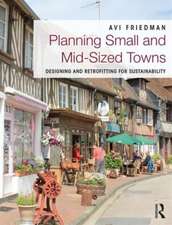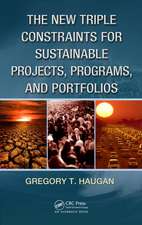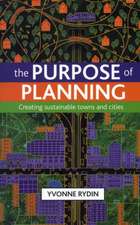Transforming Asian Cities: Intellectual impasse, Asianizing space, and emerging translocalities
Editat de Nihal Perera, Wing-Shing Tangen Limba Engleză Paperback – 27 sep 2012
Switching the vantage point to Asian cities and citizens, Transforming Asian Cities draws attention to how Asians produce their contemporary urban practices, identities, and spaces as part of resisting, responding to, and avoiding larger global and national processes. Instead of viewing Asian cities in opposition to the Western city and using it as the norm, this book instead opts to provincialize mainstream and traditional knowledge. It argues that the vast terrain of ordinary actors and spaces which are currently left out should be reflected in academic debates and policy decisions, and the local thinking processes that constitute these spaces need to be acknowledged, enabled, and critiqued.
The individual chapters illustrate that "global" spaces are more (trans)local, traditional environments are more modern, and Asian spaces are better defined than acknowledged. The aim is to develop room for understandings of Asian cities from Asian standpoints, especially acknowledging how Asians observe, interpret, understand, and create space in their cities.
| Toate formatele și edițiile | Preț | Express |
|---|---|---|
| Paperback (1) | 448.44 lei 43-57 zile | |
| Taylor & Francis – 27 sep 2012 | 448.44 lei 43-57 zile | |
| Hardback (1) | 1119.52 lei 43-57 zile | |
| Taylor & Francis – oct 2012 | 1119.52 lei 43-57 zile |
Preț: 448.44 lei
Nou
Puncte Express: 673
Preț estimativ în valută:
85.81€ • 89.82$ • 71.42£
85.81€ • 89.82$ • 71.42£
Carte tipărită la comandă
Livrare economică 31 martie-14 aprilie
Preluare comenzi: 021 569.72.76
Specificații
ISBN-13: 9780415507394
ISBN-10: 0415507391
Pagini: 320
Ilustrații: 4 tables, 51 halftones and 4 line drawings
Dimensiuni: 156 x 234 x 20 mm
Greutate: 0.43 kg
Ediția:New.
Editura: Taylor & Francis
Colecția Routledge
Locul publicării:Oxford, United Kingdom
ISBN-10: 0415507391
Pagini: 320
Ilustrații: 4 tables, 51 halftones and 4 line drawings
Dimensiuni: 156 x 234 x 20 mm
Greutate: 0.43 kg
Ediția:New.
Editura: Taylor & Francis
Colecția Routledge
Locul publicării:Oxford, United Kingdom
Public țintă
Postgraduate and UndergraduateCuprins
Introduction 1. Seoul: A Korean Capital Sharon Hong 2 Rajadamnoen Avenue: Thailand’s Transformative Path towards Modern Polity Koompong Noobanjong 3 Public Art, Urban Renewal, and the Construction of a National History: The Revive Manila Program and the New Manileno Campaign Tessa Guazon 4 An Unexpected Urban Renewal Practice: The Emergence of a Multi-Cultural Historic Plaza in Taipei Huey-Jiun Wang 5 Critical Vernacularism: A View of Architecture from the Places of Production Nihal Perera 6 Housing Rights and Citizenship of Rural Migrants in Urban China: The Case of Yuanhenong, Shanghai Zhao Yeqin 7 Ordinary Lives in Extraordinary Cyberabad Diganta Das 8 Street Vending in Indonesian Cities: Their Characteristics and Activities in Yogyakarta Deden Rukmana and Djarot Purbadi 9 Perceptions of Tenure Security in a Squatter Settlement in Lahore, Pakistan Fatima Wajahat 10 The Struggle for Living Space: Ethnicity, Housing, and the Politics of Urban Renewal in Japan's Squatter Areas Takuya Motooka, Toshio Mizuuchi 11 Contests over Community: A Community Organization in Hong Kong Leung, Hon-Chu 12 Traversing the City: Some Gendered Questions of Access in Mumbai Shilpa Phadke 13 Indianizing the Neighborhood Unit: The Jawaharnagar Plan Sanjeev Vidyarti 14 Planning and Self-Organizing: The Case of Small Towns in Sri Lanka Jagath Munasinghe 15 Niche Authority in Urbanized Villages:
Bottom-up Codetermination in Megacity China Sonia Schoon
Bottom-up Codetermination in Megacity China Sonia Schoon
Recenzii
"Transforming Asian Cities... [a] recent and timely contribution to the literature on Asian cities that seek[s] to better understand the diversity, realities and challenges in Asian urbanism and transformation." - Zhu Qian, International Development Planning Review, 35 (3) 2013
Descriere
Transforming Asian Cities draws attention to how Asians produce their contemporary urban practices, identities and spaces as part of, resisting, responding to and avoiding larger global and national processes. The individual chapters illustrate that "global" spaces are more (trans)local, traditional environments are more modern, and Asian spaces are better defined than acknowledged. The aim is to develop room for understandings of Asian cities from Asian standpoints, especially acknowledging how Asians observe, interpret, understand, and create space in their cities.













